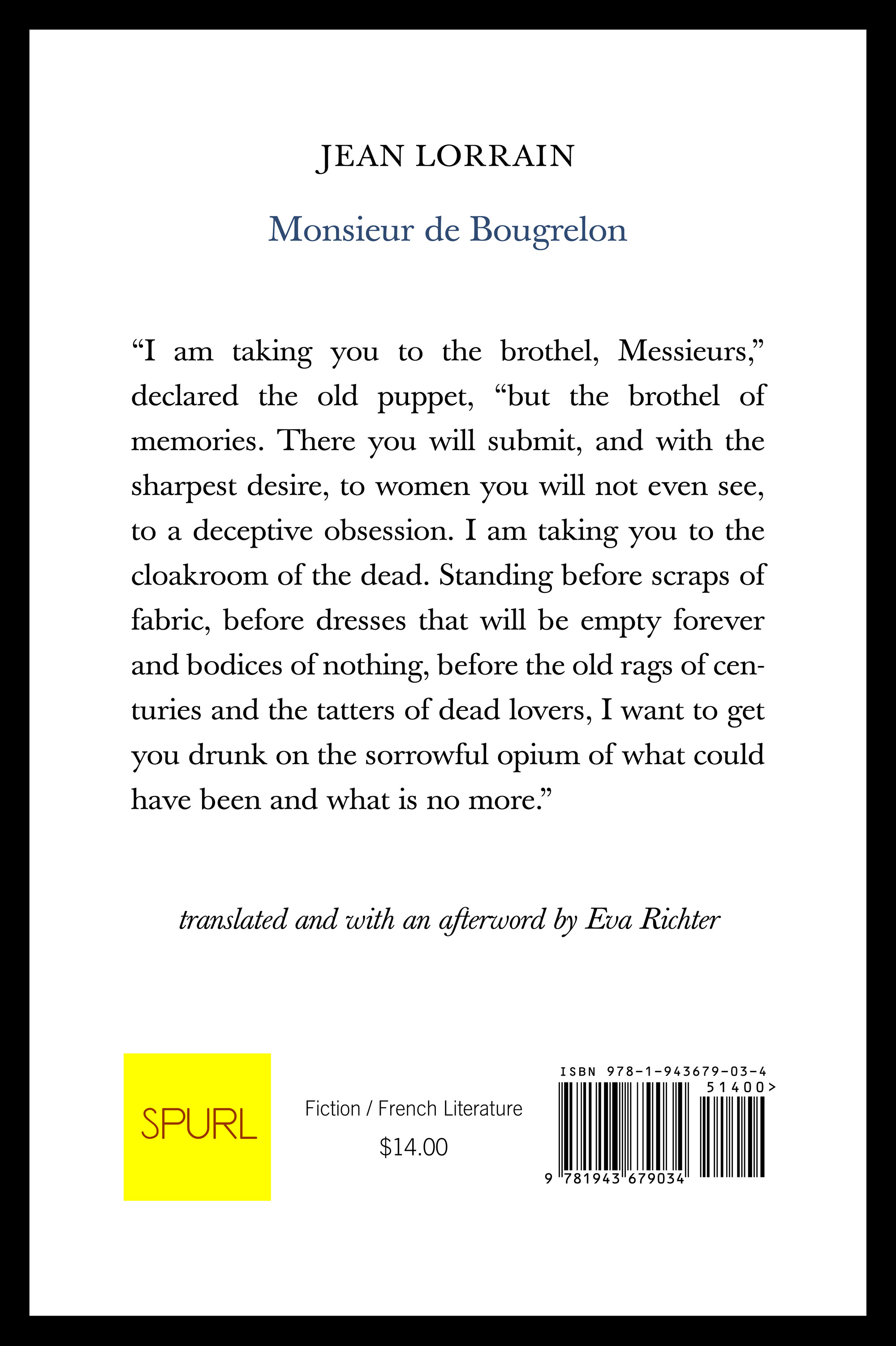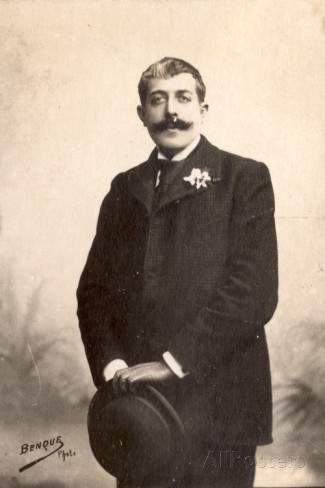Trade paperback, 128 pages. ISBN: 9781943679034.
MONSIEUR DE BOUGRELON
BY JEAN LORRAIN
Translated from French by Eva Richter. In Jean Lorrain’s Monsieur de Bougrelon, an eccentric, outmoded dandy leads ennui-filled French tourists around misty Amsterdam. Guiding them through sailors’ bars, whorehouses, and costume galleries, Monsieur de Bougrelon recounts hallucinatory stories of his past and delves into his “heroic friendship” with his aristocratic companion Monsieur de Mortimer.
Monsieur de Bougrelon is a unique character: loquacious, proud, a leftover from an earlier age, wearing garish outfits and makeup that drips. To his speechless audience, he waxes nostalgic about his life as an exile in Holland, as well as what he calls “imaginary pleasures” – obsessions with incongruous people, animals, and objects. These obsessions are often sexual or border on the sexual, leading to shocking, surreal scenes. Monsieur de Bougrelon also enthuses over his beautiful friend Monsieur de Mortimer, making this novella one of the rare works of the nineteenth century to broach homosexuality in a meaningful way, years before Jean Cocteau and Jean Genet.
Originally published in French in 1897, Monsieur de Bougrelon is now available in English translation for the first time. Its inventiveness and sheer Decadence find kindred spirits in the novels of Comte de Lautréamont, Joris-Karl Huysmans, and even Louis-Ferdinand Céline, while the novella’s indulgent language and unconventional vision of art and sex embody the best of fin-de-siècle literature. It is, in the novella’s own words, a true “boudoir of the dead.”
Jean Lorrain, born Paul Alexandre Martin Duval, was a novelist, critic, and dramatist, and one of the most conspicuously Decadent figures of fin-de-siècle France. Masks and disguises are recurring themes in his work, as is Parisian low life, satanism, ether, homosexuality, and the aristocracy. In 1897, he wrote Monsieur de Bougrelon, and shortly after, Lorrain left Paris to live in Nice. His stay at the Riviera began an intense period of creativity. In 1901, he wrote his best-known work, Monsieur de Phocas, which he followed a year later with his fantastical aristocrat saga, Le Vice errant. His health declined due to syphilis and his abuse of drugs, and he died on June 30, 1906, of peritonitis, at the age of fifty. It was rumored that when Lorrain’s grave was opened in 1986, the body of “Sodom’s ambassador to Paris,” as biographer Philippe Jullian called him, still smelled of ether.
“A singular and intoxicating experience”
REVIEWS AND FEATURES
James Conway, Strange Flowers / Thom Cuell, Minor Literature[s]
M. A. Orthofer, The Complete Review / John Coulthart, feuilleton
Samm Deighan, Diabolique Magazine / Excerpt on B O D Y Literature
Sander Bink, rond1900.nl / NancyO, oddly weird fiction
Steven Felicelli, The Millions / 3AM: Magazine
Christina Holt, Bellingham Review / Better Than Food



